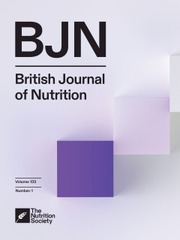Article contents
Metabolism of ketone bodies in pregnant sheep
Published online by Cambridge University Press: 09 March 2007
Abstract
1. A combination of isotope-dilution and arteriovenous-difference techniques was used to determine the significance of ketones to energy homoeostasis in fasted pregnant ewes.
2. There was incomplete interconversion of D(−) 3-hydroxybutyrate (3HB) and acetoacetate (AcAc) and therefore neither entry rate nor oxidation of total ketone bodies could be estimated by assuming circulating ketone bodies represent a single metabolic compartment. Total ketone body metabolism was satisfactorily summarized using a three-compartment model. In fasted pregnant ewes the mean entry rate of total ketones was 1 mmol/h per kg body-weight and of the ketones entering the circulation 87% were promptly oxidized to carbon dioxide accounting for 30% of the total COa production.
3. Ketone bodies are readily utilized by hind-limb skeletal muscle such that if completely oxidized, 18±4 and 48±3% of the oxygen utilized could be accounted for in fed and fasted pregnant ewes respectively. For both 3HB and AcAc there was a hyperbolic relationship between utilization and arterial concentration. The apparent Michaelis constant (Km) values were 0·55 and 1–42 mM respectively and the maximum velocity (Vmax) 2·9 and 5·6 mmol/h per kg muscle. The arterial concentration of AcAc is always below the Km value and this limits the utilization rate. The D(−) 3HB concentration, however, may surpass that required for maximum utilization and ketoacidosis may be a consequence of this.
4. A two-compartment model was used to analyse ketone body metabolism by hind-limb skeletal muscle. The results suggested substantial intercon version and production of AcAc and 3HB.
5. The pregnant uterus utilized 3HB which if completely oxidized accounted for 12±2 (fed) and 25±4 (fasted) % of its O2 consumption. At least 64% of the net 3HB utilized was oxidized. AcAc was not utilized in significant quantities.
- Type
- Papers on General Nutrition
- Information
- Copyright
- Copyright © The Nutrition Society 1982
References
REFERENCES
- 25
- Cited by


